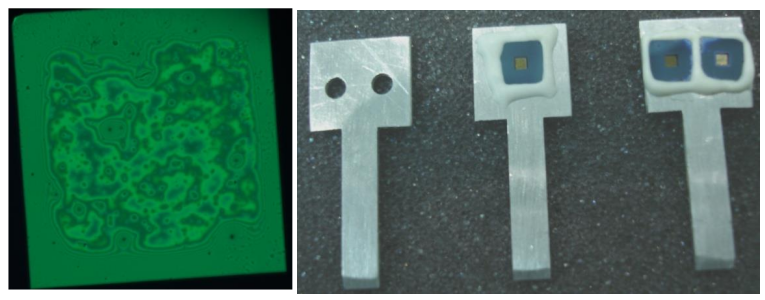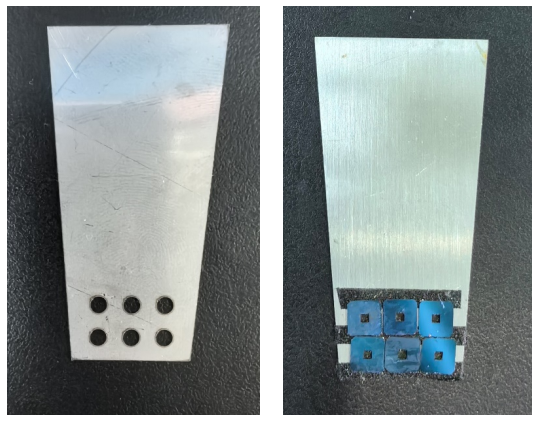1.Sample preparation for imaging
STXM imaging has certain requirements for sample preparation, and its measurement signal is closely related to the thickness, density and structure of the sample. The sample thickness is required to be below 10 microns.
1)If it is a powder sample, the particle size of the powder should be less than 5 microns if possible, and the particle size should be homogeneous. The powder sample can be sprinkled on the silicon nitride window (100 nm thickness) or the copper mesh, or diluted with alcohol or pure water and then dripped onto the SiN window or the copper mesh to be tested when it is dry. The station is equipped with SiN windows and copper meshes, or users can bring their own. At last, stick the SiN window or copper mesh with the sample onto the sample holder.
2)For cell and tissue sections, the thickness of the section should be less than 5 microns, and the thickness should be uniform, which can be embedded in resin or paraffin or frozen before slicing. The sample section can be placed on a copper mesh, and the aperture of the copper mesh should be larger than the size of the cell or tissue structure to be observed. The copper mesh with the sample is glued to the sample holder.
3)Prepare standard samples with the element to be measured having the same or similar valence state as that in the samples, and use them as the reference spectrum samples.
4)In case of liquid samples, take 1- 3 microliters of the liquid and add it dropwise to the SiN window, quickly cover another SiN window to the top of the liquid, and seal it with vacuum adhesive (curing time 1.5 hours). After preparation, it must be observed through an optical microscope to see whether it is qualified or not. The qualified sample has the interference fringes to be seen, as shown below. Note: the flat sides of the two SiN windows are close together, so that the liquid film is not too thick and X-ray can penetrate it.

5)The imaging sample holder, shown below, holds six samples at a time.

2.Sample preparation for spectroscopy
The beamline staff should first be consulted to determine the experimental program, and then the samples are prepared. The following precautions should be taken when preparing the samples:

1)Sample holder material: steel and copper. Magnetic experiments and Fe elemental experiments choose copper sample holder; Cu elemental experiments choose steel holder; C, O experiment samples need to be placed on the gold-plated sample holder; powder samples can adopt the groove sample holder. You can also stick carbon or copper adhesive tape on the sample holder and the sample is compacted on the tape. Thin film samples can be connected to the holder using the silver glue.
2)The sample should not be attached to the two sides of the holder (3mm width should be left, see the lower-middle panel), otherwise it will touch off or contact with the voltage pins to form a short circuit when inserting the sample holder, especially for thick samples.
3)After fix the sample using carbon glue, copper glue or silver glue, etc., it is best to use a multimeter to measure whether the sample is conductive, to avoid wasting time for re-taking.
4)Remember to take a picture with your cell phone after the sample is prepared. If there are too many samples, you need to use a ruler to measure the approximate position of each sample, so that it is easy to find the sample with the camera during experiment.
附件下载:
